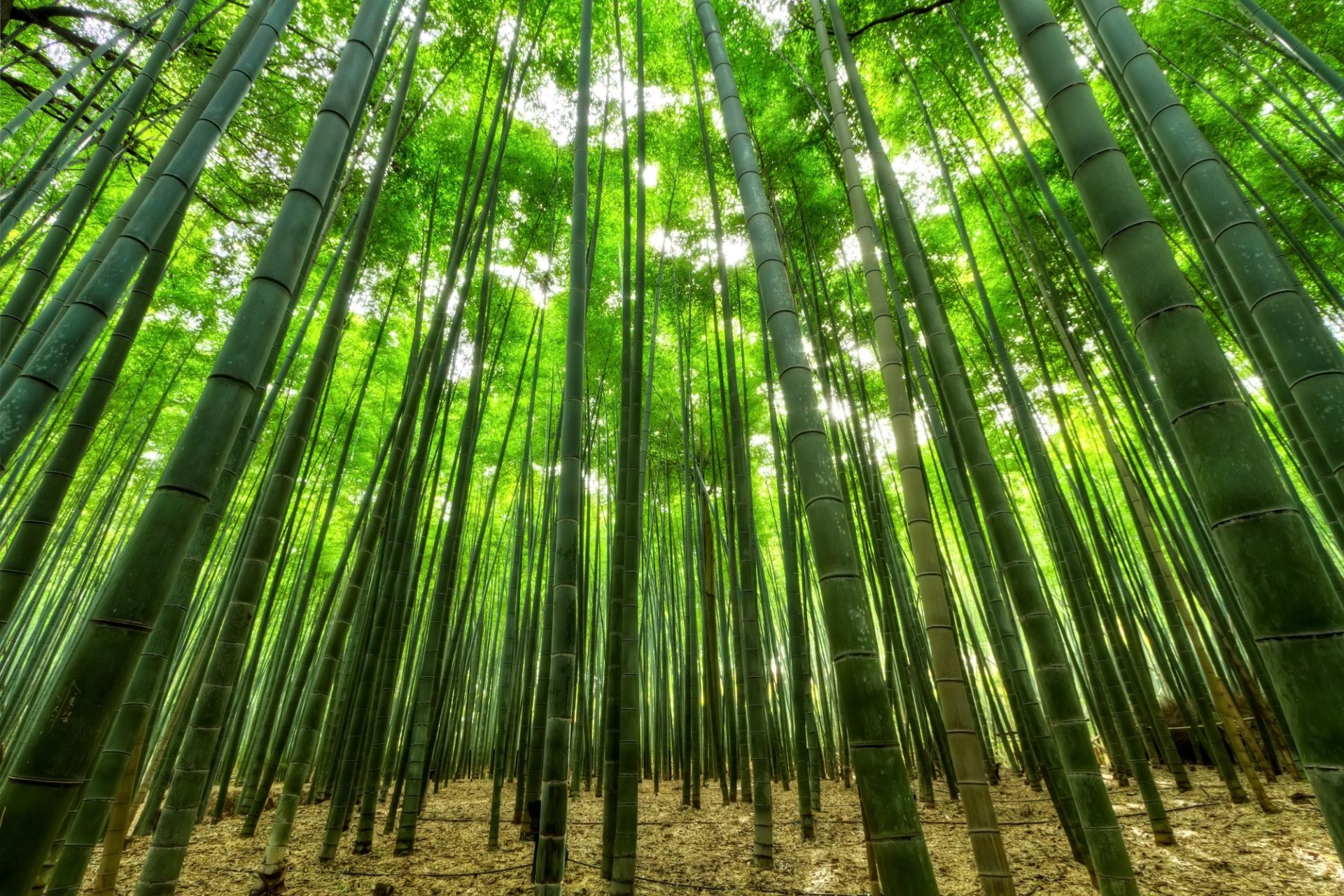The History of Bamboo Flooring
- Published By: District Floor Depot

Surprisingly, while some bamboo can grow over 100 feet tall, bamboo is not a tree.
They’re actually classified as wood, evergreen, perennial grasses.
There are many uses of bamboo, from construction to food. Bamboo plants are even used to increase your good luck when used in Feng Shui.
Another use that’s gaining in popularity is bamboo flooring, and there are many reasons why.
If you’ve been considering using bamboo flooring but still haven’t made your final decision, keep reading. We’re sharing with you the history of bamboo so you can make an informed decision.

History of Bamboo
The relationship between bamboo and humans goes back a long way.
The Chinese began using bamboo to construct treehouses over 5,000 years ago.
Between 200 BCE to 200CE, people began using bamboo to make paper and books.
Bamboo Uses During the Tang and Ming Dynasty’s
During the Tang Dynasty in the 600s, people began using bamboo to make musical instruments.
Other cultural uses sprang up including bamboo used in the following ways:
- Art
- Poetry
- Music
- Food
- Weapons
During the Ming Dynasty in the 1300s, people began using bamboo for bedding and flooring.
Modern Uses for Bamboo
Fast forward to the late 1990s when Chinese inventors developed a treatment to give bamboo the feel and look of hardwoods.
Bamboo stalks were cut and planed into planks for use in flooring and boards.
By the 20th century, both Japan and China were using laminated bamboo for flooring.
Bamboo Facts
One of the reasons why bamboo is so versatile in its uses is because there are over 1,4000 varieties of bamboo species.
Some species only grow up to four to six inches. The largest species can grow up to 130 feet tall.
What’s interesting to note is that it doesn’t matter what the final height of bamboo is, the stalk will always grow to its maximum height and width within one growing season.
If the bamboo isn’t harvested or cut within that season, rather than growing taller, bamboo sprouts other branches.
Where Bamboo Grows
Interestingly, it’s not just China where bamboo grows.
It can grow in many countries across the globe such as:
- Japan
- Parts of Australia
- India
It can even grow in the U.S.

The History of Bamboo Flooring
It’s only been about 20 years that bamboo has been used for flooring.
Thanks to recent advances in manufacturing, the performance and usage for bamboo has grown.
One of the biggest advances is the introduction of the superdense strand-woven bamboo. This bamboo can be milled into boards that are 2 1/2 times harder than red oak.
Another advancement and benefit to bamboo floors are that they’re produced in a way that can mimic other woods such as:
- Maple
- Walnut
- Cumaru
- Tigerwood
Bamboo can now deliver not only the look and durability of Brazilian hardwood, but it costs two-thirds less.
Benefits of Bamboo in Flooring
While the versatility of bamboo flooring is a huge draw, it’s not the only benefit.
As humans become more aware of ways we can individually help save the planet, homeowners are increasingly turning to bamboo flooring thanks to the fact that it’s both efficient and sustainable.
While bamboo produces the same amount of energy as traditional coal, the process is much more efficient. Coal creates a much greater amount of ash than bamboo making it easier to dispose of it once it’s burned.
And unlike coal, the charcoal from bamboo doesn’t emit any sulfur.
Bamboo also regenerates every three to five years, which is a faster rate than other types of timber.
In fact, it’s thought that harvesting bamboo helps improve growing conditions because the old bamboo allows more sunlight to reach younger plants.
The Flexibility and Durability of Bamboo
Bamboo is extremely flexible and can bend without breaking.
This makes using bamboo for curved projects much easier.
Bamboo also lasts up to 30 years meaning you won’t have to invest in new flooring any time soon. It’s also less prone to warping than wood, which makes it a perfect choice for homeowners living in humid climates.
How Bamboo Is Made
Bamboo stalks are sliced into ¼-by-¾-inch strips.
It’s then bound using powerful adhesives and milled into three types of bamboo flooring:
Horizontal
Strips are adhered together edge to edge with the skin side up.
Using this method makes maximum use of the stalk.
Horizontally-made bamboo flooring shows the nodes which give it a classic bamboo look. The offset layers add strength.
You can get horizontal bamboo flooring in natural, stained, or carbonized.
Vertical
With vertical bamboo flooring, the strips are arranged and adhered together with the cut edges facing up which gives the flooring a linear look.
The flooring is less likely to show dents or nodes than with horizontal bamboo.
You can buy vertical bamboo flooring in natural or carbonized.
Strand-Woven
With strand-woven bamboo, flooring the strips are soaked in glue and then laid out lengthwise in different orientations.
It’s then compressed using big hydraulic presses which creates a solid rectangular mass that’s then milled into floorboards.
Strand-woven is two to three times denser than other types of bamboo. As a result, you can use special finishes and surface treatments.
How to Shop for Bamboo Flooring
You want to focus on a few factors when you’re shopping for bamboo flooring since it can differ depending on the manufacturer and process it underwent.
Here’s what to look for:
Thickness
Solid boards are sold ½ to ⅝ inch thick.
Engineered planks are sold ⅜ to ½ inch thick and are best in damp or very dry environments.
Unfinished planks are ¾ inch thick.
Width
Most solid bamboo is 3¾ inches, but 4- to 6-inch widths are gaining in popularity.
Hardness
The Janka scale is the universal hardness rating for flooring.
While there’s a lot of variation depending on the bamboo flooring product, most vertical and horizontal floors score around 1,825.
Strand woven floors are nearly double that score at around 3,270 which is on par with Brazilian redwood.
Air Quality
Adhesive resin is the second main ingredient used in bamboo flooring.
If a cheap urea-based resin is used, it can contain formaldehyde, which is a known carcinogen.
Check for an independent certification so you won’t have to worry about breathing in high levels of VOCs (volatile organic compounds).
Request a Consultation
While the history of bamboo flooring is relatively new, it’s known already a type of flooring that is durable, unique, and eco-friendly.
Bamboo is also affordable and beautiful.
We want to help you pick out the right type of flooring for your lifestyle!
Click here to schedule your consultation today.
